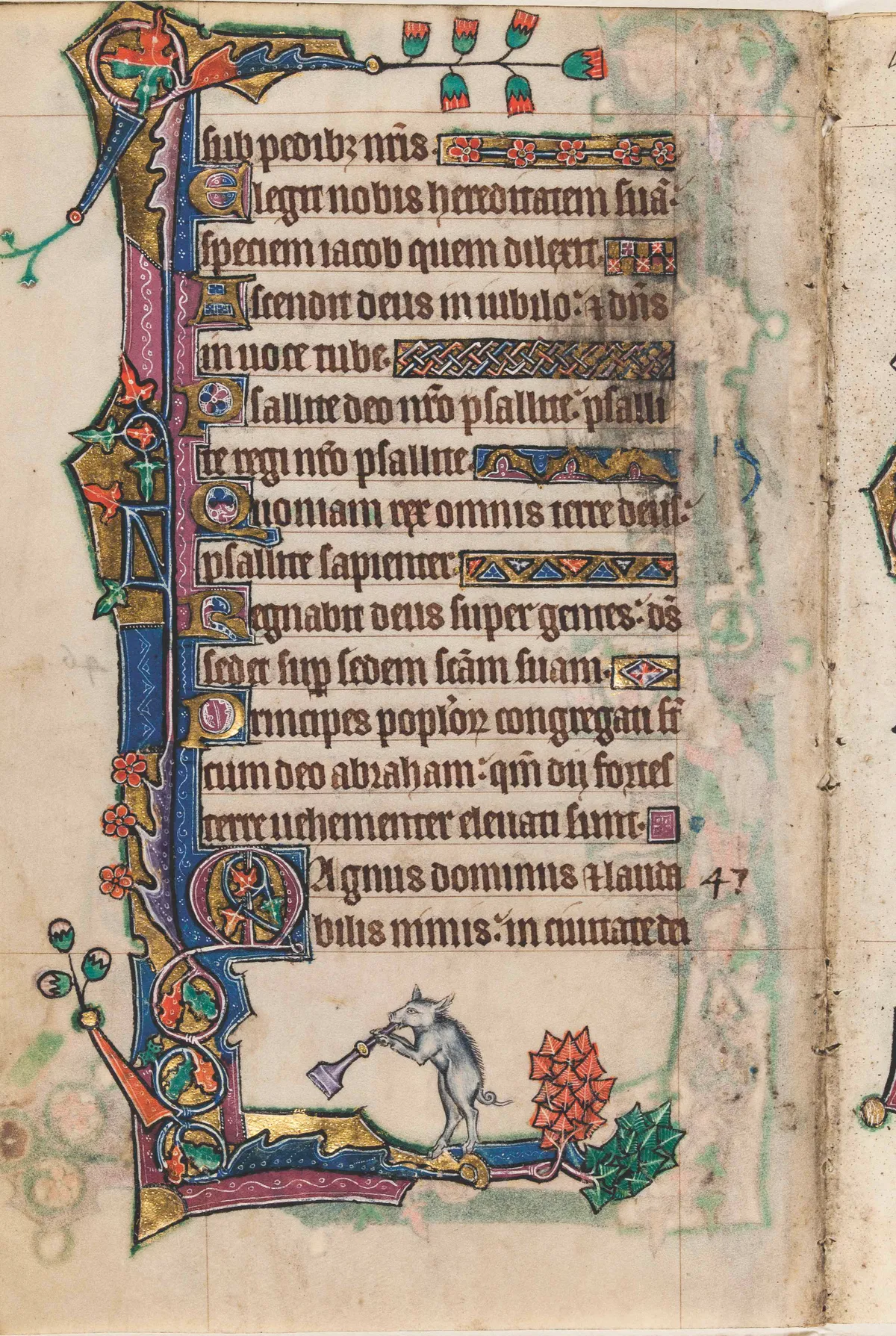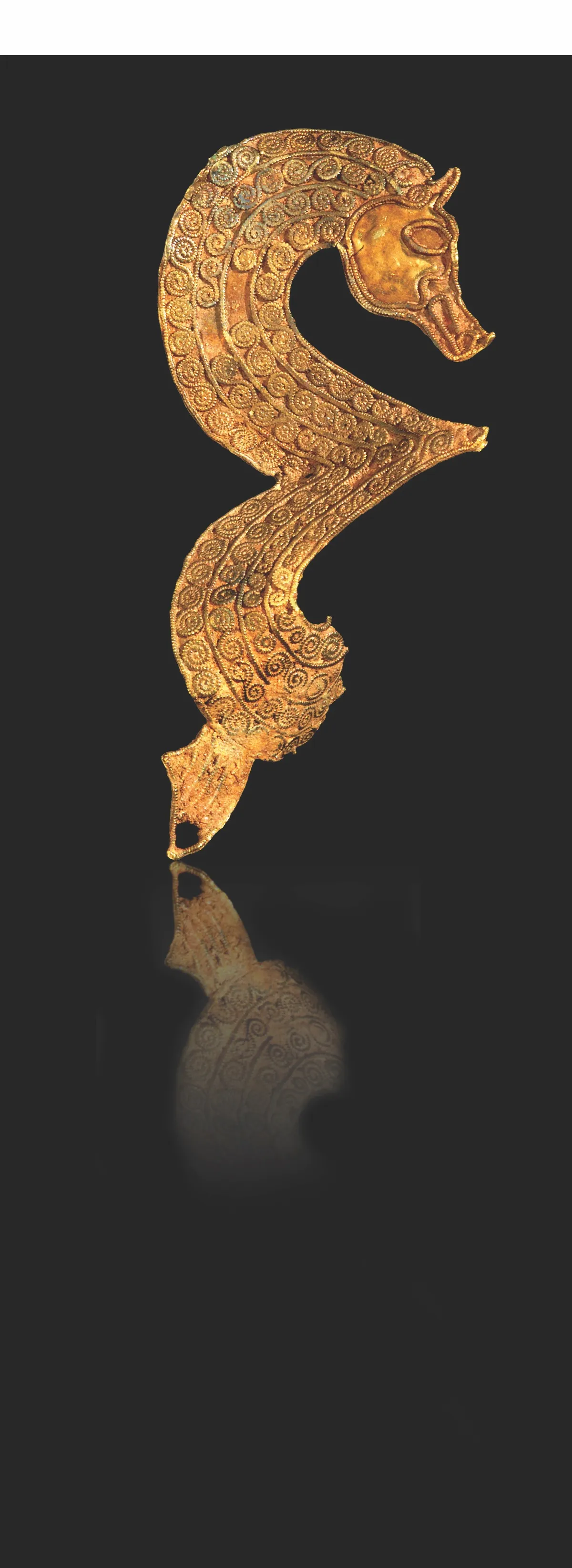'The Burlington House Cartoon' by Leonardo da Vinci
Acquired: 1962

The Virgin and Child with Saint Anne and the Infant Saint John the Baptist cartoon (created c1499–1500 and also known as ‘The Burlington House Cartoon’) was bought by London’s National Gallery from the Royal Academy of Arts. A public campaign managed to raise £800,000, with assistance from the Art Fund and The Pilgrim Trust. Such support was matched when it first went on display – nearly a million visitors came to see it in a matter of months.
Where to see The National Gallery, London. 020 7747 2885.
The Great Bed of Ware
Acquired: 1931

If you dread moving furniture up flights of stairs, spare a thought for the curators responsible for moving this three-metre-wide four-poster bed. Created in c1590 for an inn in Hertfordshire, this super-size piece of furniture was famed in its day for its grand scale and continues to attract attention in its current location at the Victoria and Albert Museum, which bought it for £4,000 in 1931 with support from the Art Fund.
Where to see V&A, London. 020 7942 2000.
Lady’s Secretaire by Thomas Chippendale
Acquired: 1999

Finished to the highest quality, this superb example of Thomas Chippendale’s work was bought with assistance from the Art Fund, among others, for a total of £650,000 to prevent its export. The master cabinetmaker produced the lacquered and japanned secretaire in 1773, and its first home was Harewood House in Leeds.
Where to see Temple Newsam, Leeds. 0113 336 7461.
The Three Graces, by Antonio Canova
Acquired: 1994

The departure of this elegant neoclassical trio from the UK was stopped when £7.6m was raised. A joint acquisition was made by the Victoria and Albert Museum and the National Galleries of Scotland, with assistance from the National Heritage Memorial Fund, John Paul Getty II, Baron Heinrich Thyssen-Bornemisza and others.
Where to see V&A, London. 020 7942 2000.
The Toilet of Venus (‘The Rokeby Venus’) by Diego VelÁzquez
Acquisition: 1906

Following the Art Fund’s first successful campaign, the controversial 17th-century painting of the nude goddess was bought for £45,000 in 1906 and transferred to The National Gallery, where it remains today – despite a Suffragette attack on the work in 1914.
Where to see The National Gallery, London. 020 7747 2885.
Virgin Adoring the Sleeping Christ Child by Sandro Botticelli
Acquired: 1999

This masterpiece was bought for £10.3m by the Scottish National Gallery, where it is still on display. The Texan Kimbell Art Museum had reportedly been lined up to buy it, until the Art Fund and Scottish Executive, among others, stepped in.
Where to see Scottish National Gallery, Edinburgh. 0131 624 6200.
Macclesfield Psalter
Acquired: 2005

Two-hundred-and-fifty-two pages of illuminated medieval creativity at its best – this psalter is worth the attention it receives. Created in East Anglia and dating from around the 1320s–30s, the work attracted the attention of The Getty Museum in Los Angeles when it went on sale. It was eventually bought by The University of Cambridge’s Fitzwilliam Museum for £1.7m, following an extensive campaign and support from both the
Art Fund and the National Heritage Memorial Fund.
Where to see The Fitzwilliam Museum, Cambridge. 01223 332900.
Madonna of the Pinks by Raphael
Acquired: 2004

One of the most significant saves in recent years, this portrayal of the Virgin and her son was bought for £22m from the Duke of Northumberland. He’d previously been offered a higher value (from The Getty Museum) but accepted the lower amount after a tax deduction. Funding was rallied from supporters including the Art Fund, the Heritage Lottery Fund and The American Friends of the National Gallery.
Where to see The National Gallery, London. 020 7747 2885.
Anglo-Saxon Staffordshire Hoard
Acquired: 2010

It was one metal detectorist’s lucky day in 2009, when they discovered a hoard described by the Art Fund as ‘the largest find of Anglo-Saxon gold ever recorded’. An impressive £3.3m was brought together through donations and various grants to purchase the 3,500 pieces for both the Birmingham Museum and Art Gallery and Stoke-on-Trent’s Potteries Museum & Art Gallery.
Where to see Birmingham Museum and Art Gallery, Birmingham. 0121 348 8038.
The Virgin and Child with Two Angels by Cimabue
Acquired: 2000

This painting may be tiny at just 26cm x 21cm, but it caused a major stir when it was valued for auction in 2000, with a price
tag that was anything but small
– some £2m. With very few works existing by this
13th-century master, all eyes were on The National Gallery as it tried to buy this major work. The UK government accepted the work in lieu of inheritance tax to the vendors, and allocated it to the London gallery, with additional support from Sir Paul Getty.
Where to see Not currently on display. The painting is housed at The National Gallery, London
The Becket Casket
Acquired: 1996

The remains of the murdered Archbishop of Canterbury, St Thomas à Becket, were said to have been encased in this elaborate Romanesque casket, complete with depictions of the saint’s demise on its surfaces. It was acquired by the V&A for £4.2m following support from the National Heritage Memorial Fund and the Art Fund, amongst others.
Where to see Victoria and Albert Museum, London. 020 7942 2000.
Diana and Actaeon & Diana and Callisto by Titian
Acquired: 2009 and 2012 respectively

Titian painted both of these artworks for King Philip II of Spain at the height of the artist’s popularity in Europe, between 1556 and 1559. The paintings, considered to be major masterpieces, were put up for sale in 2008 by the Duke of Sutherland. A combined target of £100m (later reduced to £95m) was reached in an extraordinary display of support, including contributions from the Art Fund, the Scottish government, Heritage Lottery Fund, and numerous individual donors and trusts.
Where to see These two artworks are shared between The National Gallery, London (020 7747 2885) and the National Galleries of Scotland, Edinburgh (0131 624 6200)
St John the Evangelist by Domenichino
Acquired: 2010

This impressive Italian baroque painting is today on loan to The National Gallery, after a private individual stepped in with the required £9.2m to prevent it being sold abroad. The anonymous buyer agreed that the work would be loaned to the gallery. The then-secretary of state for culture, Jeremy Hunt, noted in the export committee’s report that he ‘would like to place on record the government’s appreciation of the generosity of such private purchasers in enabling such a precious object to remain in this country.’
Where to see The National Gallery, London. 020 7747 2885.
The Blue Rigi by JMW Turner
Acquired: 2007

There was a strong public response to save this watercolour, with more than 11,000 individuals ‘buying a brushstroke’ for £5 each. A total of £4.95m was paid to acquire the work, which is one of three depictions of the subject by the artist, with support arriving from the Art Fund and the National Heritage Memorial Fund.
Where to see Tate Britain, London, by appointment only. 020 7887 8888.
The Procession to Calvary by Pieter Brueghel the Younger
Acquired: 2010

The National Trust joined forces with the Art Fund to keep this painting, considered one of the strongest remaining examples of the Flemish artist’s work, in the country. A total of £2.7m was raised to acquire the heavily detailed painting, which portrays Christ’s journey to crucifixion.
Where to see The painting is on loan to The Holburne Museum, Bath until 4th June 2017. It belongs to Nostell Priory and Parkland, West Yorkshire.
Many of the country’s most treasured artworks and antiques have followed unconventional paths to find their ways into our museums and galleries. Some have even been rescued from being sold into a collection beyond the public eye, or abroad. In part one of our shortlist, we reveal 15 of the greatest works to have been ‘saved’ in this way.
Discover more masterpieces and read the full feature in the June issue of Homes & Antiques. Back issues are available here.